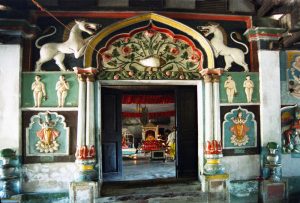Sattras:

There is a report on political significance of Sattras in Assam published by Indian Express.
It is common to see politicians often going to different Sattras to seek blessings or extolling the virtues of Sankardeva, especially in the run-up to elections.
- Sattras are monastic institutions created as part of the 16th-century Neo-Vaishnavite reformist movement started by Vaishnavite saint-reformer Srimanta Sankaradeva (1449-1596).
- These Sattras/Thans were established as centres of religious, social and cultural reforms in the 16th century across Assam.
- Sattras promulgate Sankardeva’s unique “worship through art” approach with music (borgeet), dance (xattriya) and theatre (bhauna).
- Each Sattra has a naamghar (worship hall) as its nucleus and is headed by an influential “Sattradhikar”. Monks, known as bhakats, are inducted into Sattras at a young age. They may or may not be celibate, depending on the kind of Sattra they are inducted into.
Sankardeva’s philosophy:
- Sankardeva propagated a form of Bhakti called eka-sharana-naam-dhrama, and espoused a society based on equality and fraternity, free from caste differences, orthodox Brahmanical rituals and sacrifices.
- His teaching focused on prayer and chanting (naam) instead of idol worship. His dharma was based on the four components of deva (god), naam (prayers), bhakats (devotees), and guru (teacher).




